Four
HOUSES OF WORSHIP
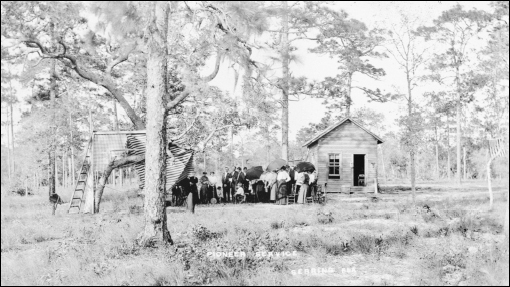
The “Church of the Trees” was the site of this religious service on January 28, 1912, held at the northern edge of the Circle. Records of the earliest services were preserved by retired Salvation Army officer John F. Newcomb. Both the local Methodist and Salvation Army congregations grew from these non-denominational outdoor services. George E. Sebring encouraged the establishment of local congregations and provided land for church sites. (Courtesy Sebring Historical Society.)

The First Methodist Church building was erected by 60 volunteers on December 15, 1913, at the corner of Pine Street and North Ridgewood Drive. Work commenced at 6:00 a.m., and by the end of the day, it had been painted, had electric lights, and was furnished, all in time for evening services. Rev. E. P. Michener was in charge, with oversight from Mr. Capwell and B. A. Cope. (Courtesy Sebring Historical Society.)

The Sebring White Way reported on June 2, 1916, on the construction of the second sanctuary for the First Methodist Church at the east corner of South Pine Street and East Center Avenue. The concrete, stone, and brick building, modeled after the First Methodist Church of Eustis, was forecast to cost approximately $20,000 and was to be built by Sebring residents. (Photograph by Woodward, courtesy Sebring Historical Society.)
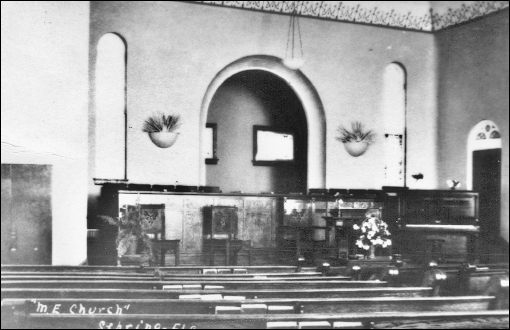
The interior of the 1916 First Methodist Church included native Florida pine decor, a pipe organ, carpet, decorative stained-glass windows, a heating system, lavatories, and other modern conveniences. The Sebring White Way reported that “money will not be spared to make the building a thing of beauty and a joy forever.” A 1928 hurricane severely damaged the church, but the church building was successfully repaired. (Courtesy Sebring Historical Society.)

The third sanctuary of the First United Methodist Church was constructed during 1952–1953 at 126 South Pine Street during the pastorate of Dr. E. F. Carwithen and was opened on May 31, 1953. This photograph dates from about 1962. The families of many of the early congregants are represented in today’s First United Methodist Church. (Courtesy Sebring Historical Society.)
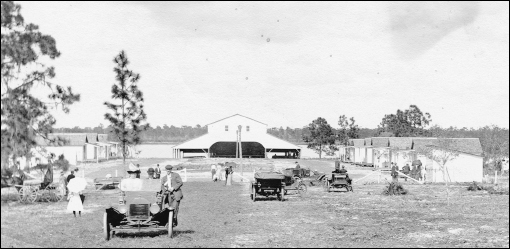
A 1912 Sebring Real Estate Company advertising brochure entitled “The Consummation of a Great Idea” promoted Salvation Point, “a large assembly grounds on the shore of one of the most beautiful lakes in this picturesque community . . . in the midst of fruit and flowers in the land of perpetual June.” The grounds included cottages and an open-air pavilion on the southwest shore of Dinner Lake. (Courtesy Sebring Historical Society.)
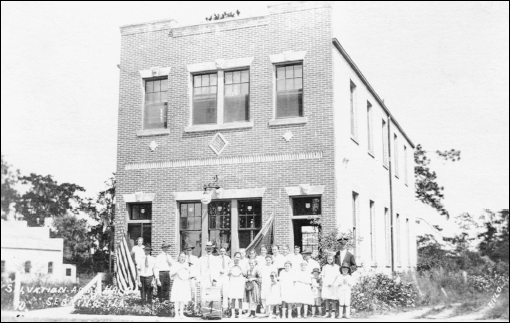
According to The Fifty Years of Sebring , George E. Sebring had served the East Liverpool, Ohio, Salvation Army Corps as bandmaster, and he sought the help of the Salvation Army in his Florida venture. Salvation Army representatives to visit or live in early Sebring were Col. William Evans, Commandant Ira Munselle, and John F. Newcomb. The Salvation Army Hall was constructed in 1916 on North Ridgewood Drive. (Photograph by Field, courtesy Sebring Historical Society.)
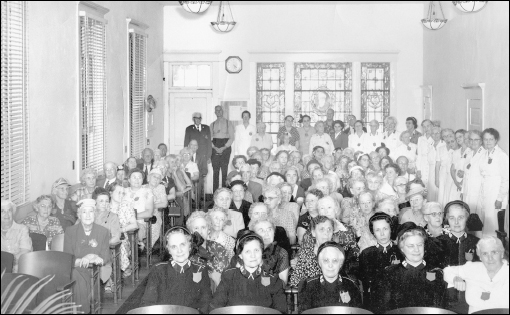
Among attendees at an early 1950s Salvation Army Home League annual meeting were Carrie Weigle, Mrs. Ray Gearing, Mrs. Clifford, Mrs. Young, Mrs. Gordon MacGilvary, Col. Elizabeth Anderson, Cecile Bair, Mrs. McAdams, Alice Dunn, Mrs. O. D. Garrett, Ruth Wolfe, Mildred Talmash, Maj. Pearl Tanner, Mrs. Sowers William, Susie Munselle, Martha Kimmell, Gertrude Vanderville, and Mr. and Mrs. Herbert K. Anderson. (Courtesy Sebring Historical Society.)
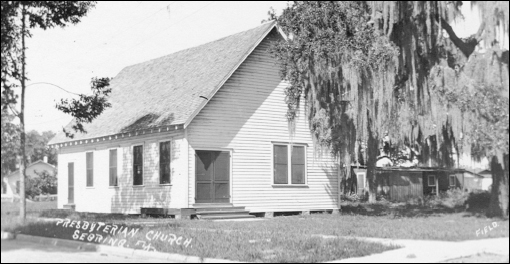
The First Presbyterian Church was organized on May 3, 1914, and met in this frame structure on North Pine Street. This photograph dates from the early 1920s when the congregation experienced sustained growth. Howard Crawford, in The Seventy-Five Years of Sebring, recounts that ushers borrowed chairs from neighbors to accommodate the large crowds, returning the chairs during the last hymn so that congregants could exit. (Photograph by Field, courtesy Sebring Historical Society.)
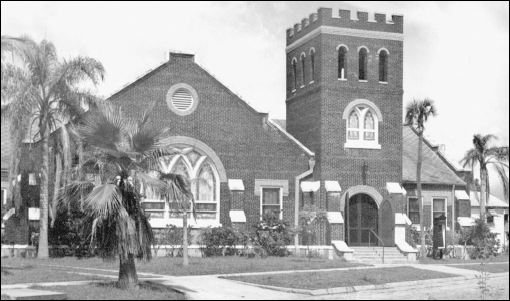
The cornerstone for the present-day First Presbyterian Church building was placed on November 13, 1925, with representatives of local denominations participating in the dedication ceremony. Constructed at the corner of Poinsettia Avenue and South Pine Street, First Presbyterian meets in one of Sebring’s oldest sanctuaries in continuous use. An educational building was constructed in 1954. (Courtesy Sebring Historical Society.)
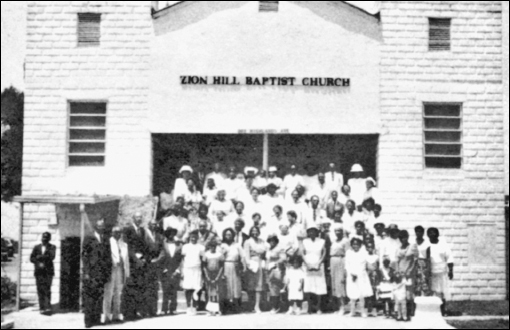
The Zion Hill Missionary Baptist Church, located at 301 Highlands Avenue, was organized in 1924 under the pastorate of Rev. M. H. Hill. The sanctuary shown in this undated photograph was preceded by two smaller frame structures. It was constructed during the pastorate of Rev. C. Dean, who served from 1925 to 1960. (Courtesy Sebring Historical Society.)
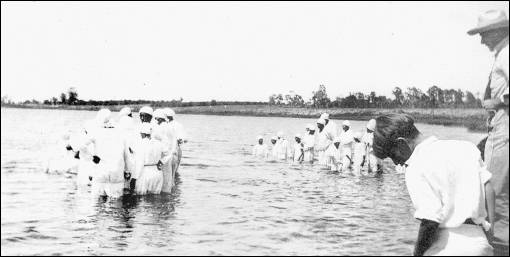
This photograph shows baptisms in Dinner Lake in the 1930s. Sebring’s original First Baptist Church, which became First Calvary Baptist Church and subsequently First Missionary Baptist Church on Lemon Avenue, was organized in October 1913. For a time, their services were held in the sanctuary of the Greater Mount Zion A.M.E. Church, which was organized in 1915. By 2007, there were over 60 houses of worship in Sebring and the environs. (Courtesy Sebring Historical Society.)

The Church of the Brethren was organized in 1916 under the guidance of Elder J. H. Moore, who wrote enthusiastically about the young community. When more Brethren arrived, George E. Sebring donated a parcel on Poinsettia Avenue for a bungalow-style sanctuary constructed by B. A. Cope. This c. 1933 photograph shows the second church after the congregation relocated in 1920 to the corner of Oak Avenue and South Pine Street. (Courtesy Sebring Historical Society.)

The Church of the Brethren Aid Society was established with Mrs. Moore as the first president in 1916, and the Sunday school first met in January 1917. After the church moved in 1920, a new sanctuary was constructed (now Garst Chapel), along with kindergarten and classroom buildings to accommodate church programs and ladies’ sewing and quilting. The present sanctuary was constructed in 1950 and subsequently remodeled. (Courtesy Sebring Historical Society.)

Prior to Sebring’s establishment, Catholic priests from Tampa traveled on horseback to celebrate Mass in the area. The first Mass celebrated in the new town was by Fr. Charles Lashley in the Varena family home in 1918; Mass in other homes followed. St. Catherine Catholic Church was constructed in 1924 and was named for St. Catherine of Siena. This image depicts the current church building nearing completion in 1978. (Courtesy Sebring Historical Society.)
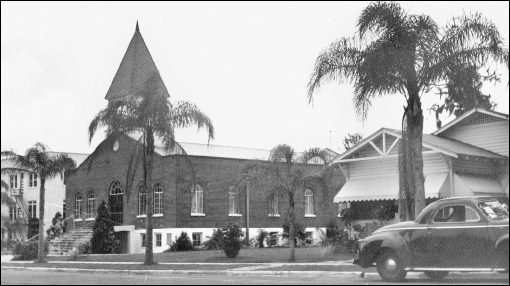
This 1935 brick building on Lemon Avenue near Pine Street was the second home of the First Baptist Church established in 1922; the second local congregation to bear that name. The church met first in the Tuscawilla Park pavilion, and in 1923 moved to a white frame sanctuary. From 35 to 40 servicemen attended Sunday services at First Baptist Church during World War II. (Courtesy Sebring Historical Society.)
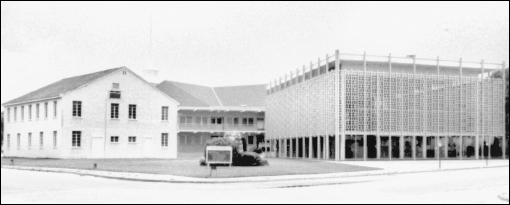
In 1958, First Baptist Church moved into its unusual Glass Church sanctuary, also on Lemon Avenue. The building reportedly had 8,000 square feet of glass, and following construction of the 1987 sanctuary, it was converted to use as a brick-faced educational building. (Courtesy Sebring Historical Society.)

The Temple Beth Israel synagogue was built on Orange Street at Fernleaf Avenue in about 1927 on land donated by George E. Sebring. The temple was razed in the 1950s, and many of the members attended Temple Emanuel in Lakeland. The local temple was reorganized in the 1960s, Rabbi Morton M. Applebaum arrived in 1979, and the present-day Temple Israel, shown here, was dedicated in 1986. (Courtesy Sebring Historical Society.)
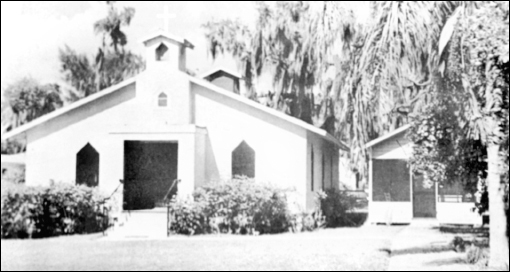
St. Agnes Episcopal Church was first known as the Mission Church of the Good Shephard when it was organized in the mid-1920s. Fr. John M. Luke was the vicar in 1929 when the congregation moved to a renovated house on Hickory Street, and the church was renamed St. Agnes Mission. Hilan Rogers served as clerk and treasurer from 1928 to 1958. (Courtesy Sebring Historical Society.)

The present home of St. Agnes Episcopal Church is on Lakeview Drive on the west side of Lake Jackson. The church complex was dedicated on January 24, 1960, under the direction of Fr. Stuart M. Stewart, and the former property was sold to St. Catherine Catholic Church. (Courtesy Sebring Historical Society.)
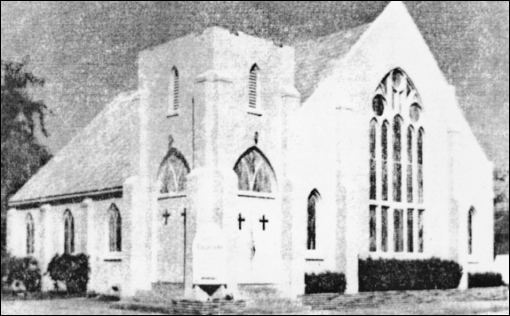
The Sebring Church of the Nazarene was organized in June 1944 with 13 members and Rev. John D. Rhame as the first pastor. The first church, shown here, was constructed as funds allowed at the corner of South Commerce Avenue and South Pine Street on land previously occupied by Joe Stiles’s Standard Oil station. When completed in 1945, the building was debt free. The current church was dedicated in 1972. (Courtesy Sebring Historical Society.)
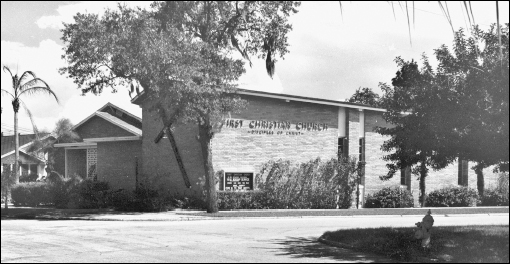
The First Christian Church (Disciples of Christ) was organized in the spring of 1926. The congregation held services at Tuscawilla Park and began construction of the church using wood first utilized as scaffolding for the new Highlands County Courthouse. This sanctuary was followed by a 1965 structure at Poinsettia Avenue and South Eucalyptus Street that is still in use. (Photograph by C. W. Burn, courtesy Sebring Historical Society.)
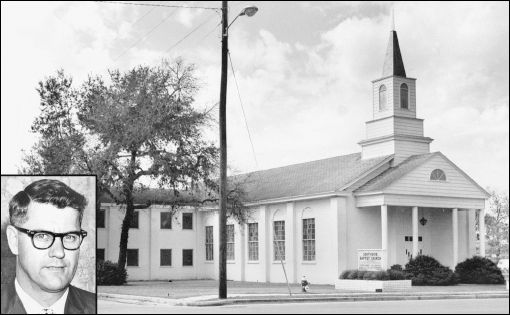
Southside Baptist Church was organized in 1947, and the first service in the new sanctuary at South Commerce and Orange Avenues was on Easter Sunday 1948. The inset on this c. 1960 photograph shows Rev. Leland E. Brooker, who served as pastor from 1954 until 1983. The church experienced marked growth and service during his tenure. (Courtesy Sebring Historical Society.)